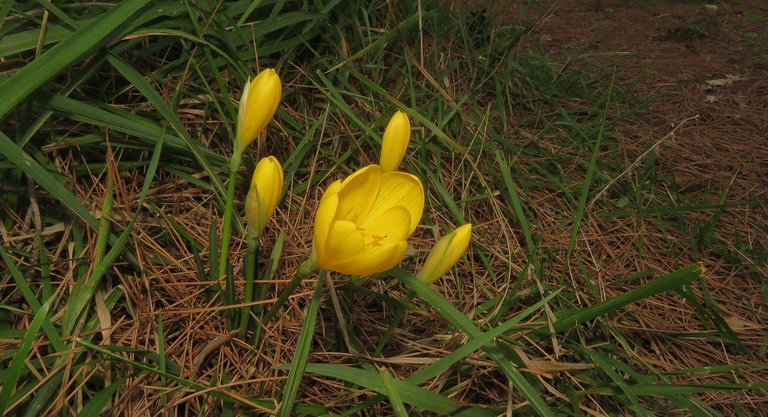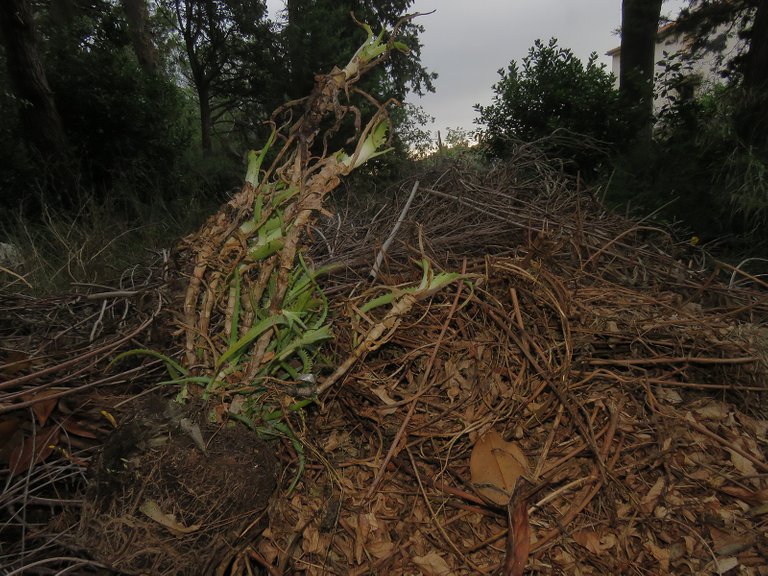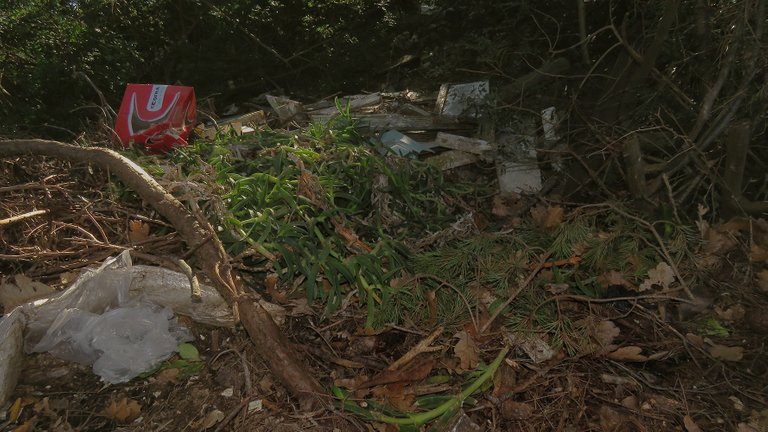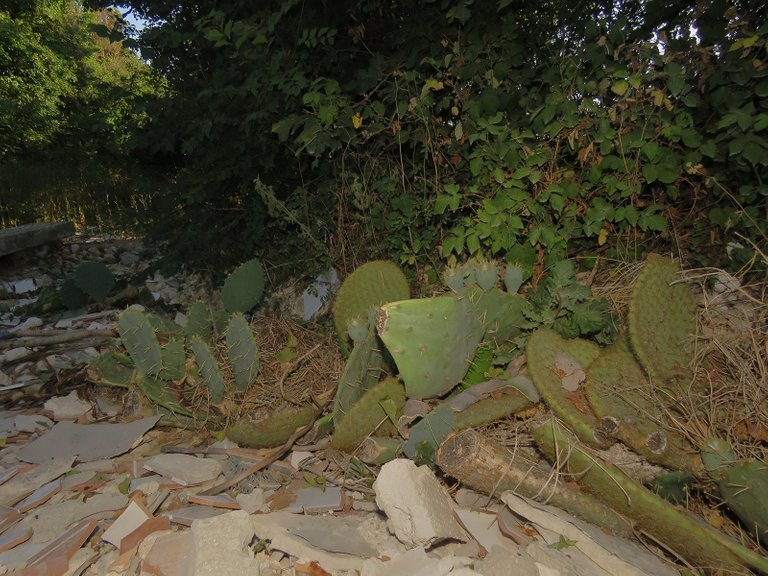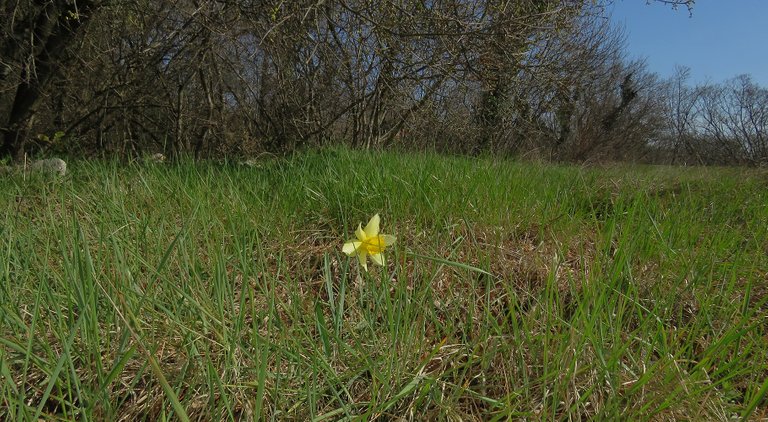Sometimes, when people make changes in their yards, some plants or plant parts turn out to be an undesired surplus, and sometimes, they end up in various, more or less wild areas, usually by the side of a country lane or an unpaved road that leads through the woods and meadows.
Many times those cut or unearthed remains continue to grow there until they get rooted in new places. In this post, you'll see a couple of examples of the aforementioned phenomenon I came across in the spring of 2022.
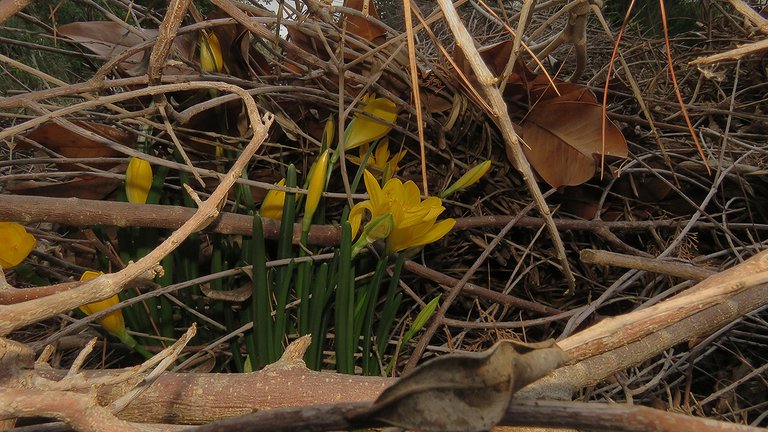
In the area called Busoler, on the outskirts of the city called Pula, under a pile of dried-out branches of various shrubs or trees from someone's suburban garden, lovely yellow flowers were growing.
These Sternbergia lutea flowers were also scattered in small groups in a small radius around the piled branches.
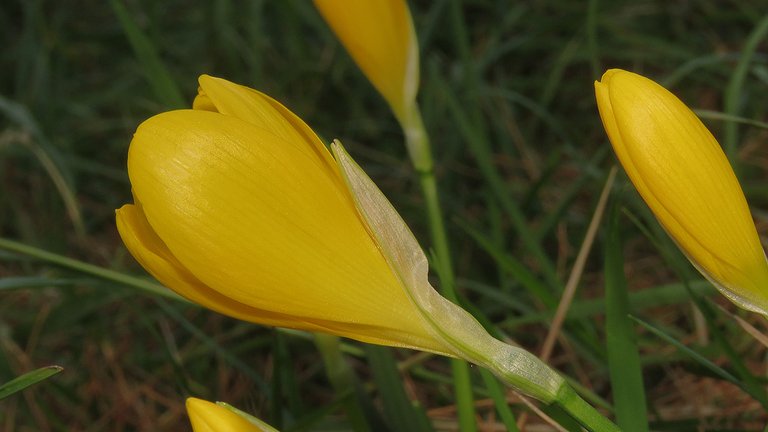
Sternbergia lutea is an ornamental plant often used around houses. Is native to the Mediterranean, Middle East, and Central Asia. Obviously, it has no problem growing in the wild here where I live, but I never saw it far from the places used as unofficial repositories of unwanted plant material from the yards and gardens.
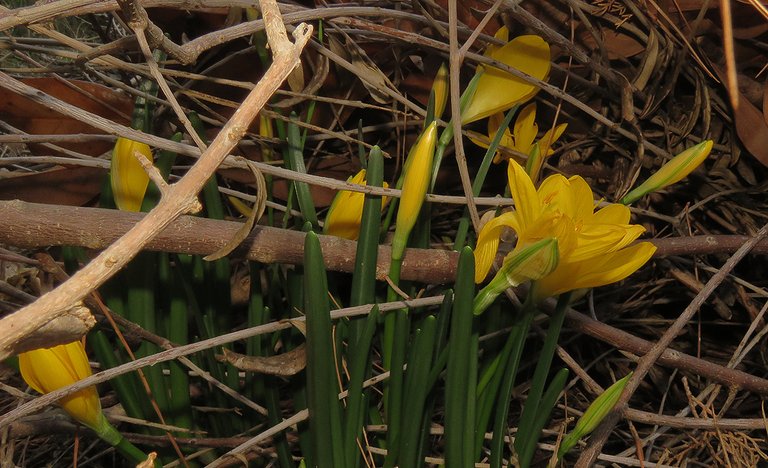
The pine grove near the road that leads from the outskirts of the city to the villages south of Pula, where these photographs were taken, is often decorated with piles of gardening surplus so it is safe to assume that the Sternbergia lutea ended up there as part of that plant garbage. Since I like plants, I like them a lot, it is difficult for me to consider them garbage, but in the absence of a better word, I'll call them that way from time to time in the post.
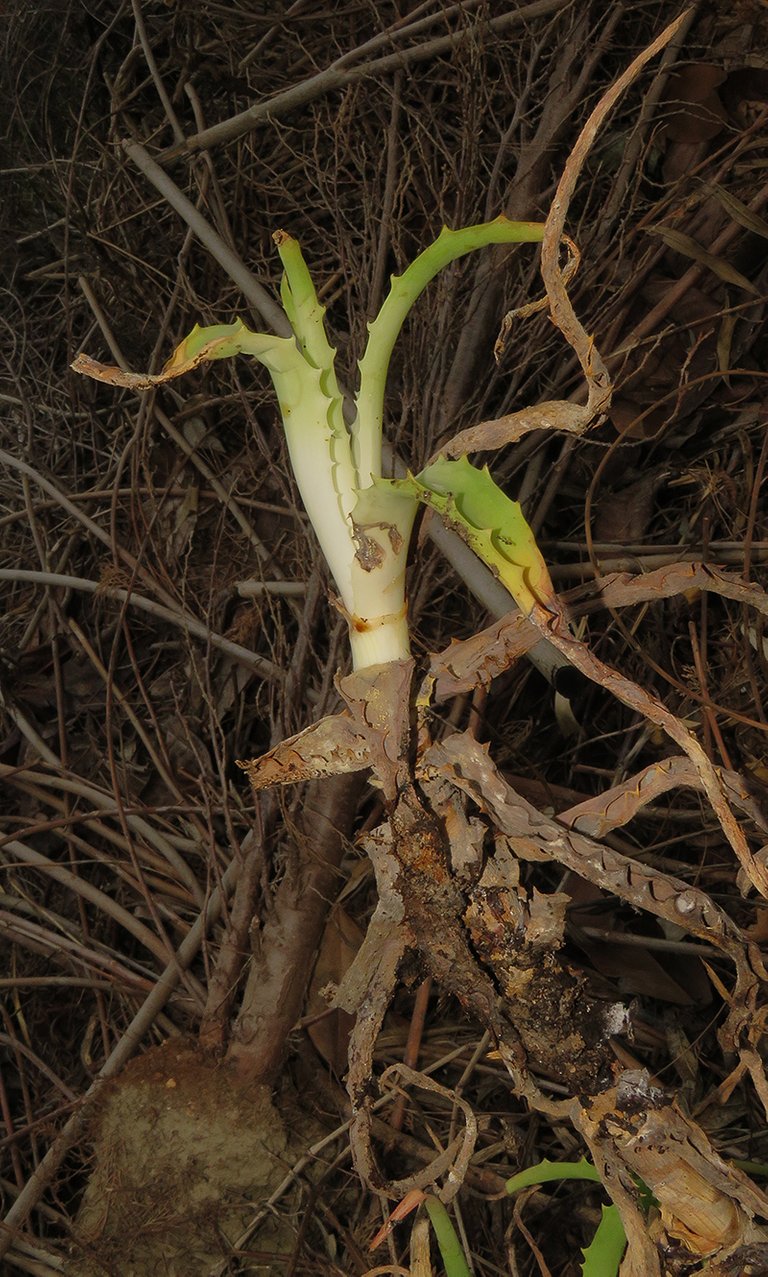
Here you can see another plant photographed in that area. It looks like a smaller version of agave or something like that. In this case, I can't tell you the name of the species.
It was still alive when the photographs were taken so, who knows, maybe it can be seen growing there. Haven't checked since.
The plant & garbage repository shown in this shot was found and photographed near the village called Premantura. Along the unpaved road that leads from the houses on the outskirts of Premantura to the sea.
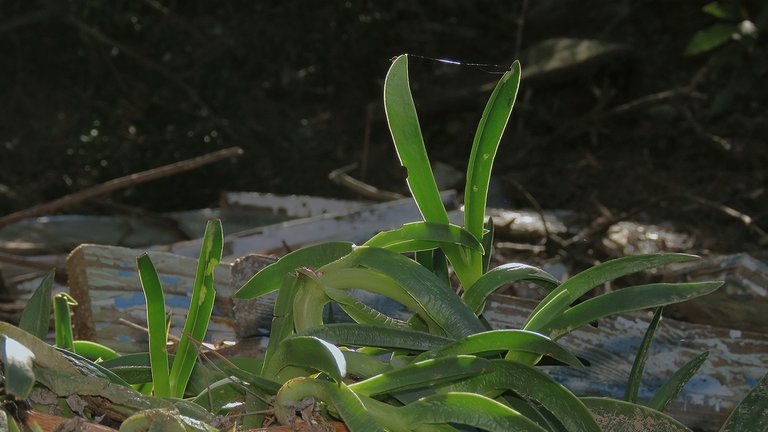
Carpobrotus acinaciformis is a succulent plant native to coastal areas of South Africa. It was introduced in Europe in the 17th century when started being used as a decorative plant. Its dense growth forms a thick, intricate green carpet that produces fairly big flowers with magenta-colored petals around the vivid yellow center with the pistil and anthers. When a pile of segmented stems and rhizomes gets thrown away here in my area, there is a good chance that the plant will end up transplanted in a new territory.
On the Carpobrotus acinaciformis plants shown in this post, I photographed a moth caterpillar. This is the larva of the Amata phegea, a diurnal moth from the Erebidae family.
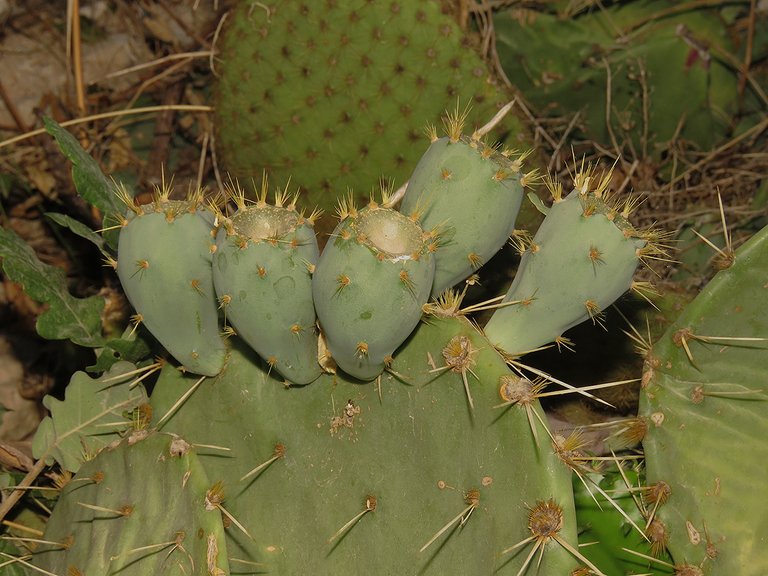
Opuntia ficus-indica is a cactus ...
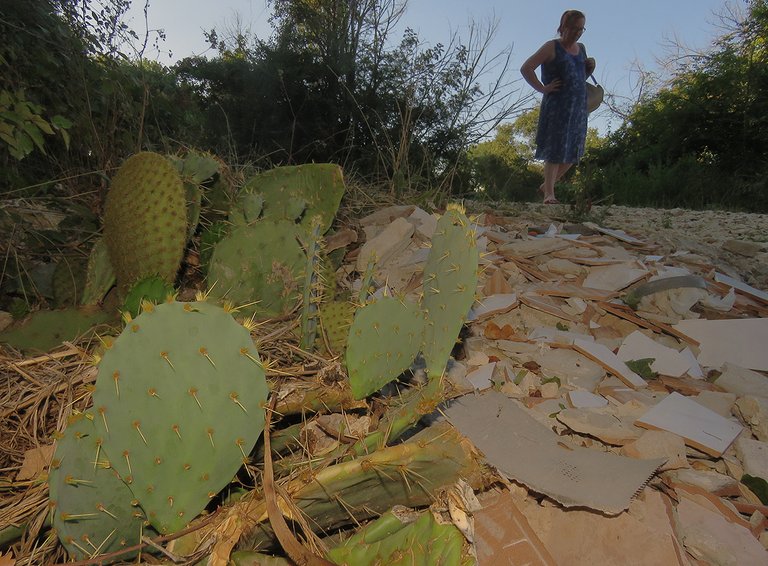
... and like all cacti, is native to the Americas. It was brought to Europe from central Mexico, more precisely.
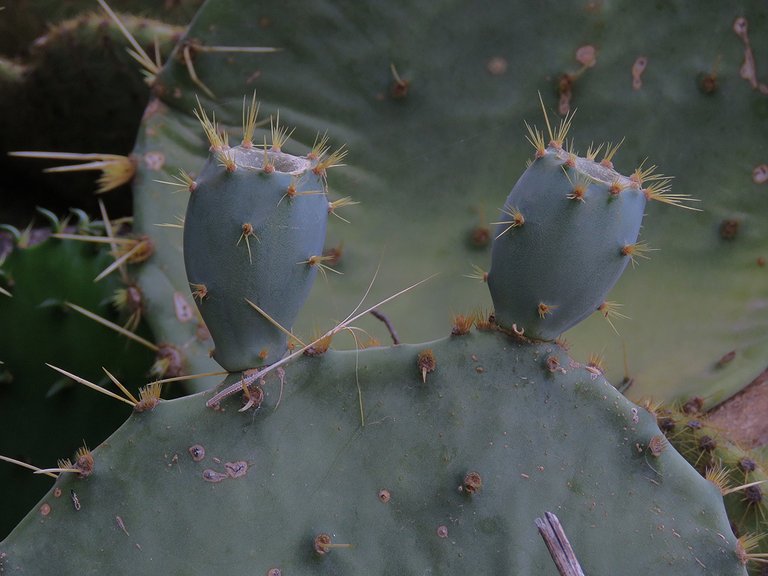
Opuntia ficus-indica, commonly known as the prickly pear, grows very successfully in the Mediterranean climate of Southern Europe.
The cactus parts shown in these photographs were brought and left by the side of the unpaved road that leads from the Village of Valtura to some woods, fields, and vineyards in the surrounding area along with some demolition waste.
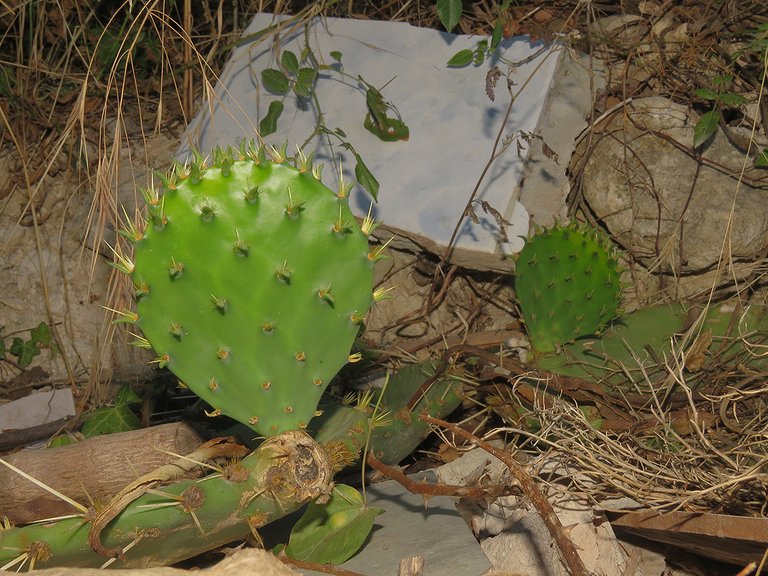
As you can see, the plant (or plants) has found a way to continue its existence in a new, accidental garden.
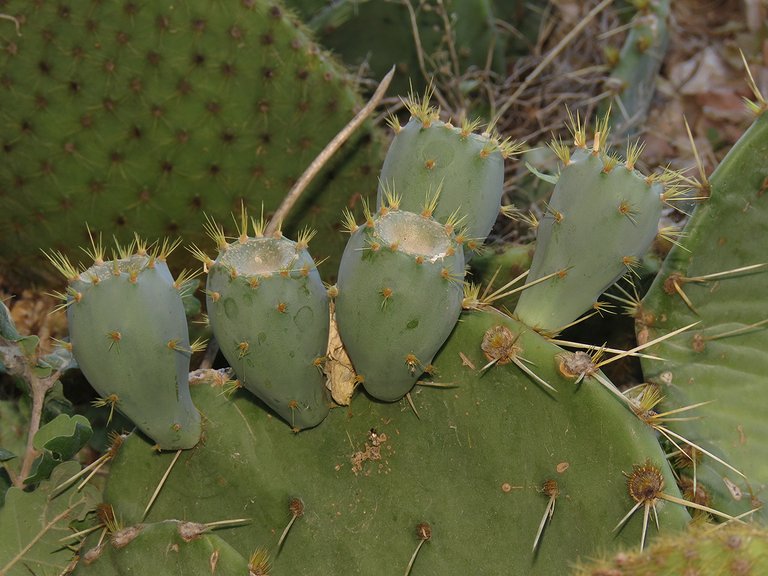
I always like to see a new cactus around.
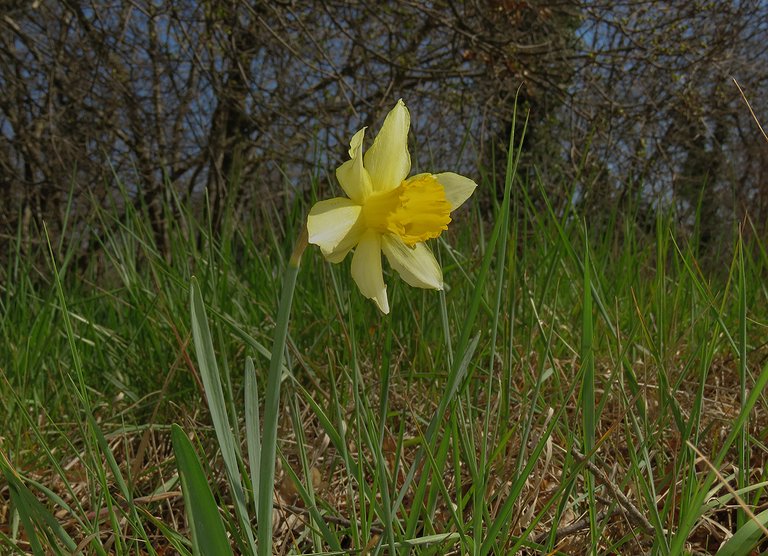
Wild daffodils (Narcissus pseudonarcissus) are common wildflowers in the central and northern parts of Istra. In my southern area, I encounter them only as cultivated plants, only around houses, and sometimes on piles of garden and construction waste.
Daffodils usually grow in groups. I mean, that's what I can say from my experience, not sure if this is some kind of fact to be taken seriously. Anyway, here you can see one single daffodil that grew near the edge of the meadow surrounded by shrubs and small trees, and the scene looks pretty unusual to me. The photograph was taken near the village of Shishan, only five or six kilometers from where I live. Is this a wild daffodil? Or a feral one? I don't know. Can't tell you that.
AND THAT'S IT. AS ALWAYS IN THESE POSTS ON HIVE, THE PHOTOGRAPHS ARE MY WORK.

